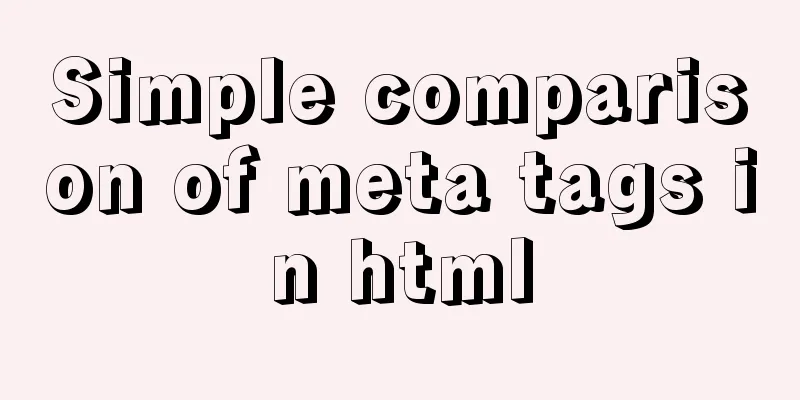5 ways to achieve the diagonal header effect in the table

|
Everyone must be familiar with table. We often encounter it in the code. Then it is sometimes necessary to add a slash header to the table, but how to achieve this effect? I have summarized the following methods: 1. The simplest method Go directly to the company's UI and ask her to make a picture, put it here as the background picture, and then fill it up. Isn’t it simple! ! ! 2. A fairly simple approach In fact, friends who are familiar with CSS3, when they see this effect, the transform attribute immediately comes to their mind. Yes, this is indeed possible, and it is also very simple. The only problem is that you need to pay attention to the browser compatibility issue. Everyone should always maintain a sense of crisis in their hearts (IE still exists). If your company requires compatibility only with Chrome, then this method is suitable for you. 3. Very simple method
.biaoTou {
border-top: 200px #199fff solid; /*The width of the top border is equal to the height of the first row of the table*/
border-left: 200px #ff8838 solid; /*The left border width is equal to the width of the first cell of the first row of the table*/
}
<td width="200">
<div class="biaoTou">
</div>
</td>
This method is also very simple, just write it down according to the above format. However, this writing method has an obvious problem: it actually uses two different colors of border to divide the diagonal line of the table header. The colors on both sides of the diagonal line cannot be the same. This method can be used if you are doing some promotional activities or other forms. But if we need the colors on both sides of the diagonal line to be the same, this approach is not applicable. Use with caution. 4. A very simple approach This effect can actually be achieved using another new tag in CSS3, canvas. Using it as a canvas to draw a diagonal line is a very simple approach, so I won’t explain it in detail. However, there is also a problem, which is the old compatibility issue. If it is only compatible with Chrome, you can do whatever you want (why does our company always have to consider the damn IE? I also want to only do projects that are compatible with Google). 5. Not a simple approach That's the js approach
<!DOCTYPE html PUBLIC "-//W3C//DTD HTML 4.01 Transitional//EN" "http://www.w3.org/TR/html4/loose.dtd">
<HTML>
<HEAD>
<TITLE>Slash Header</TITLE>
<meta http-equiv="content-type" content="charset=gbk">
</HEAD>
<body leftmargin=0 topmargin=0>
<br>
<div height="300">header</div>
<hr>
<TABLE border=0 bgcolor="000000" cellspacing="1" width=400
style="margin-left: 100px;">
<TR bgcolor="FFFFFF">
<TD width="111" height="52"><table width="100%" height="100%"
border="0" cellpadding="0" cellspacing="0">
<tr>
<td id="td1"></td>
<td>Results</td>
</tr>
<tr>
<td>Name</td>
<td id="td2"></td>
</tr>
</table></TD>
<TD width="81">Mathematics</TD>
<TD width="96">English</TD>
<TD width="99">C language</TD>
</TR>
<TR bgcolor="FFFFFF">
<TD>Zhang San</TD>
<TD>55</TD>
<TD>66</TD>
<TD>77</TD>
</TR>
<TR bgcolor="FFFFFF">
<TD>Li Si</TD>
<TD>99</TD>
<TD>68</TD>
<TD>71</TD>
</TR>
<TR bgcolor="FFFFFF">
<TD>Wang Wu</TD>
<TD>33</TD>
<TD>44</TD>
<TD>55</TD>
</TR>
</TABLE>
<script type="text/javascript">
function a(x, y, color) {
document
.write("<img border='0' style='position: absolute; left: "
+ (x)
+ "; top: "
+ (y)
+ ";background-color: "
+ color
+ "' src='px.gif' width=1 height=1>")
}
function getTop(tdobj) {
vParent = tdobj.offsetParent;
t = tdobj.offsetTop;
while (vParent.tagName.toUpperCase() != "BODY") {
t += vParent.offsetTop;
vParentvParent = vParent.offsetParent;
}
return t;
}
function getLeft(tdobj) {
vParent = tdobj.offsetParent;
t = tdobj.offsetLeft;
while (vParent.tagName.toUpperCase() != "BODY") {
t += vParent.offsetLeft;
vParentvParent = vParent.offsetParent;
}
return t;
}
function line(x1, y1, x2, y2, color) {
var tmp
if (x1 >= x2) {
tmp = x1;
x1 = x2;
x2 = tmp;
tmp = y1;
y1 = y2;
y2 = tmp;
}
for ( var i = x1; i <= x2; i++) {
x = i;
y = (y2 - y1) / (x2 - x1) * (x - x1) + y1;
a(x, y, color);
}
}
//line(1,1,100,100,"000000");
line(getLeft(td1), getTop(td1), getLeft(td1) + td1.offsetWidth,
getTop(td1) + td1.offsetHeight, '#000000');
line(getLeft(td2), getTop(td2), getLeft(td2) + td2.offsetWidth,
getTop(td2) + td2.offsetHeight, '#000000');
</script>
</BODY>
</HTML>Okay, I have explained the five methods. I hope they will be helpful for your study. I also hope that you will support 123WORDPRESS.COM. |
<<: Detailed explanation of the integer data type tinyint in MySQL
>>: CSS to achieve single-select folding menu function
Recommend
MySQL Server 8.0.13.0 Installation Tutorial with Pictures and Text
Install 8.0.13 based on MySQL 6.1.3. MySQL 8.0.13...
MySQL table auto-increment id overflow fault review solution
Problem: The overflow of the auto-increment ID in...
One minute to experience the smoothness of html+vue+element-ui
Technology Fan html web page, you must know vue f...
Summary of Common Mistakes in Web Design
In the process of designing a web page, designers...
Example analysis of mysql variable usage [system variables, user variables]
This article uses examples to illustrate the usag...
In-depth analysis of Vue's responsive principle and bidirectional data
Understanding object.defineProperty to achieve re...
HTML Basics - Simple Example of Setting Hyperlink Style
*** Example of setting the style of a hyperlink a...
Sliding menu implemented with CSS3
Result:Implementation code: <!DOCTYPE html>...
Tips for creating two-dimensional arrays in JavaScript
Creation of a two-dimensional array in Js: First ...
Detailed explanation of Linx awk introductory tutorial
Awk is an application for processing text files, ...
MySQL 5.7.19 installation tutorial under Windows 10 How to change the root password of MySQL after forgetting it
Take MySQL 5.7.19 installation as an example, fir...
Design: A willful designer
<br />Years of professional art design educa...
VMware Workstation virtual machine installation operation method
Virtual machines are very convenient testing soft...
Mysql5.7.14 Linux version password forgotten perfect solution
In the /etc/my.conf file, add the following line ...
Linux centOS installation JDK and Tomcat tutorial
First download JDK. Here we use jdk-8u181-linux-x...









